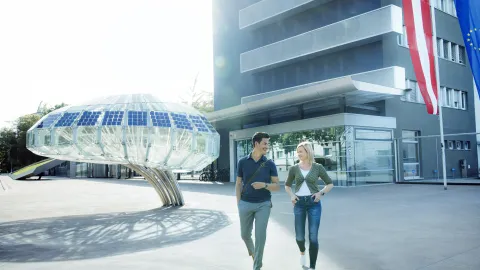Since 1984 the EU has been funding collaborative research and development activities via Framework Programmes for R&D. Since 1992 we have been successfully participating in more than 200 projects as partner or coordinator.
Furthermore, networking with the leading European players in research and development in the frame of coordination and support actions is another important task of our research activities. In addition to the continuous contacts and cooperation, dedicated projects and studies are performed and co-ordinated for the European Commission.
On member state level the following cooperations are of major importance:
- ACStyria - the Mobility Cluster Styria
- A3PS - the Austrian Agency for Alternative Propulsion Systems
- ESBS Austria - the Austrian association for electronics and software based sys-tems
- the SafeTRANS cluster about embedded systems in transportation
- FVV - the German research association for internal combustion engines
- FVA - the equivalent for powertrain research
- FAT-VDA - the research association of the German automotive industry
- the FKG Vehicle Component Group in Sweden
- Mov'eo, which is the mobility and automotive R&D competitiveness cluster in France
as well as many other public-private partnership activities.
On international level we cooperate with European research associations including:
- EARPA (European Automotive Research Partners Association)
- EUCAR (European Council for Automotive R&D)
- ERTICO (Intelligent Transport Systems)
- CONCAWE (research division of the European Petroleum Refiners Association)
- CLEPA (European Association of Automotive Suppliers)
- ERTRAC (European Road Transport Research Advisory Council)
- KDT (Key Digital Technologies)
- Clean Hydrogen (Fuel Cells and Hydrogen)
- 2Zero (Towards zero emission road transport)
- BATT4EU (Batteries European Partnership)
- CCAM (Connected, Cooperative & Automated Mobility)
- INSIDE (ARTEMIS-IA) (Advanced Research & Technology for Embedded Intelligent Systems)
- EPOSS (European Platform on Smart Systems Integration)
- AIOTI (Alliance for Internet of Things Innovation)
- EFFRA (European Factories of the Future Research Association)
- ESCO (European Cyber Security Organisation)
- EICOSE (European Institute for Complex Safety Critical Systems)
- ASAM (Association for Standardisation of Automation and Measuring Systems).
Christian Doppler Research Association

The Christian Doppler Research Association supports university-industry collaborations. Christian Doppler (CD) laboratories focus on the interface of basic research and technological development with long-term, application oriented research. They are located at university chairs with an annual joint research programme between the University and the partners from the industry. Josef Ressel Centres (JR) fulfil the same function at universities of applied sciences.
Austrian Research Promotion Agency
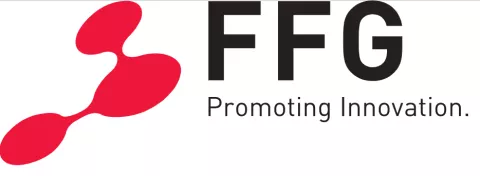
The Austrian Research Promotion Agency manages most of the national RTD programmes. This includes dedicated thematic programmes as well as the "General Programme", which is a continuous bottom-up research programme open to all branches of industry and research topics and eligible to companies and projects of all sizes.
Climate and Energy Funds
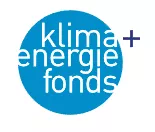
With its funding and initiatives, the Climate and Energy Fund supports the federal government in implementing its climate and energy targets set out in the Integrated National Energy and Climate Plan, drives forward the energy and mobility transition in Austria with its pioneering programs and raises public awareness of these issues. The goal is to develop a CO2-free economy and society, to strengthen the innovative power of domestic companies and to use regional resources sustainably. After all, it is not only since the Corona crisis that independence from global production systems, the resilience of the domestic economy to crises and the security of supply for the population in all areas of daily life are of crucial importance.
Horizon Europe
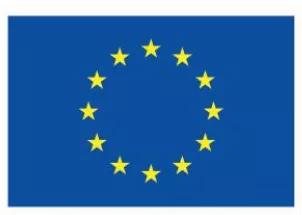
The EU Framework Programmes for Research and Innovation are the most important instruments for implementing the European Research Area. Since 1984, the EU Framework Programmes have been the chief instruments in research funding at European level and are currently the key instruments for the implementation of the European Research Area.
The current Framework Programme Horizon Europe (2021-2027) follows its predecessor Horizon 2020 (2014-2020).
InSecTT

Artificial intelligence and the Internet of Things are mutually beneficial: AI enhances the IoT by converting data into useful information, and the IoT improves AI through connectivity and data exchange. With this in mind, the InSecTT (Intelli-gent Secure Trustable Things) project aims to bring the IoT and AI together. It creates trust in AI-based intelligent systems and solutions as a major part of the Artificial Intelligence of Things, the natural evolution of AI and the IoT.
FRACTAL
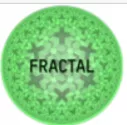
The FRACTAL (Cognitive Fractal and Secure Edge Based On Unique Open-Safe-Reliable-Low Power Hardware Platform Node) project is developing a computing node on which to base a cognitive fractal network capable of learning from and responding to its environment. It supports seam-less, fast and reliable interaction between the physical world and the cloud for applications ranging from self-driving cars to remote medical procedures.
iRel40
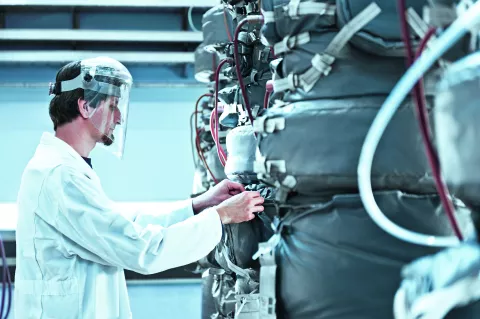
Intelligent Reliability 4.0 (iRel40) has the ultimate goal of improving reliability for electronic components and systems by reducing failure rates along the entire value chain.
1000kmPLUS
The need for common, scalable and brand-independent technology platforms for the key elements of EV, like the inverter-motor-transmission/gearbox (powertrain) and the battery, is evident. The project 1000kmPLUS ensures the superiority of European automotive key technologies in terms of performance, scalability and costs for the 2nd and 3rd generation of EV.
LONGRUN

The EU-funded LONGRUN (LONG distance poweR-train for heavy dUty trucks aNd coaches) project contributes to the decrease in the pollution caused by heavy-duty vehicles. This is done by developing an assortment of different engines, drivelines and de-monstrator vehicles which release fewer emissions. The end goal is an acceleration of the transition to alternative and renewable fuels.
NextETruck
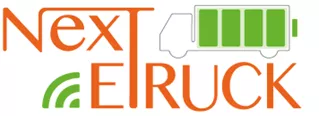
The overarching objective of the NextETruck project is to play a pioneering role in the decarbonization of vehicle fleets, via demonstrating next generation e-mobility concepts consisting of holistic, innovative, affordable, competitive and synergetic zero emission vehicles and ecosystems for tomorrow’s medium freight haulage.
HighScape

Focused on BEV architectures with distributed multiple wheel drives, and, specifically, in-wheel powertrains, HighScape explores the feasibility of a family of highly efficient power electronics components and systems and, including integrated traction inverters, on-board chargers, DC/DC converters, and electric drives for auxiliaries and actuators.
HiPE
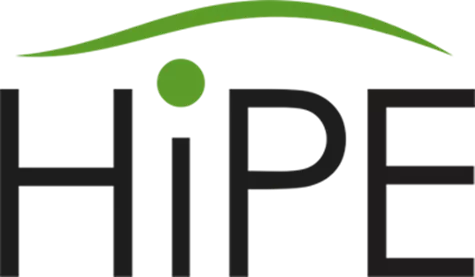
HiPE brings together 13 participants covering the whole value chain, to develop a new highly energy-efficient, cost-effective, modular, compact and integrated wide bandgap (WBG) power electronics solutions for the next generation of battery electric vehicles (BEV), and to facilitate a significant market penetration of WBG in the automotive sector.
ZEFES
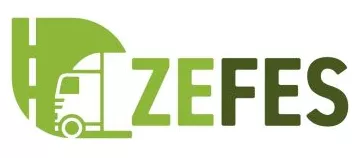
ZEFES major outcomes: Executing of real-world demonstrations of long-haul BEVs and FCEVs across Europe to take zero-emission long-haul
goods transport in Europe to the next level. Pathway for long-haul BEVs and FCEVs to become more affordable and reliable, more energy efficient, with a longer range per single charge and reduced charging times able to meet the user’s needs. Technologies which can deliver promised benefits (easy handling, similar driving hours & charging/fueling, high speeds and ability to operate in complex transport supply chains). Mapping of flexible and abundant charging/fueling points and novel charging concepts. Novel tools for fleet management to su port the rising number of long-haul BEVs and FCEVs vehicles in the logistics supply chains.
EM-TECH
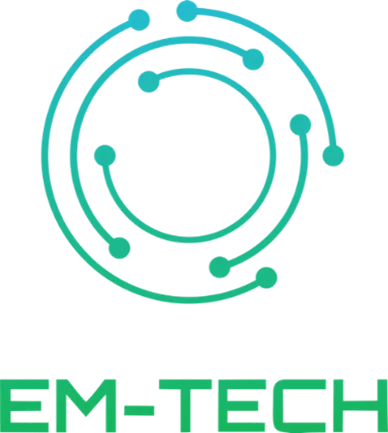
EM-TECH brings together 10 participants from industry and academia to develop novel solutions to push the boundaries of electric machine technology for automotive traction, through:
- innovative direct and active cooling designs;
- virtual sensing functionalities for the high-fidelity real-time estimation of the operating condition of the machine;
- enhanced machine control, bringing reduced design and operating conservativeness enabled by 2.;
- electric gearing to provide enhanced operational flexibility and energy efficiency;
- digital twin based optimisation, embedding systematic consideration of Life Cycle Analysis and Life Cycle Costing aspects since the early design stages; and
- adoption of recycled permanent magnets and circularity solutions.
EBRT2030
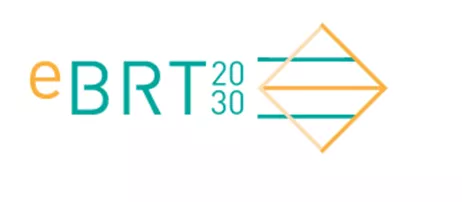
The eBRT2030 project will create a New Generation of advanced full electric, urban and peri-urban European Bus Rapid Transit (BRT) enhanced with novel automation and connectivity functionalities, to support sustainable urban transport by reducing cost/km/passenger, TCO, GHG and pollutant emissions and traffic congestion.
STREnGth_M

The STREnGth_M consortium will contribute significantly to the plan-ning of research and innovation in Europe by identifying future re-search needs in the field of road transport, by updating and sup-porting the coordination of strate-gic research agendas and roadmaps in the field and by facili-tating continuous exchange be-tween road transport research re-lated Horizon Europe partnerships and platforms. It will further ana-lyse
research, innovation and coopera-tion capacities in Member States, explore funding instruments on national and regional level and assess
potentials of national and regional roadmaps.
Within STREnGth_M the global progress of electric mobility will be tracked while measuring the feasi-bility of innovative solutions for prospective and emerging markets in Africa, Asia and Latin America. This will contribute to strengthen existing and even forge new links between European, national and regional programmes and support structures for international coop-eration task forces. The partners will also identify barriers that may exist for the deployment of re-search results on European and on international level and they will identify education and training ac-tions to contribute to capacity building.
TEACHING

TEACHING aims to develop a human-aware CPSoS for autonomous safety-critical applications, based on a distribut-ed, energy-efficient and dependable Arti-ficial Intelligence. TEACHING will funda-mentally impact the development of au-tonomous safety-critical systems, provid-ing means to improve their safety, de-pendability and overall acceptability.
SESAME

The SESAME (Secure and Safe Multi-Robot Systems) project works an open, modular, model-based approach for the systematic engineering of reliable MRS. The project will combine five use cases in various domains, such as dependable MRS in a battery innovation centre use case, with the research and development competences of their partners.
RE4DY
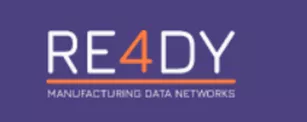
RE4DY mission is to demonstrate that the European industry can jointly build unique data-driven digital value networks 4.0 to sustain competitive advantages through digital continuity and sovereign data spaces across all phases of product and process lifecycle.
NimbleAI
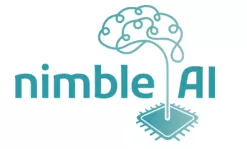
NimbleAI leverages key principles of en-ergy-efficient light sensing in eyes and information processing in brains to cre-ate an integral sensing-processing neu-romorphic chip that builds upon the lat-est advances in 3D stacked silicon inte-gration.
MADE-3D
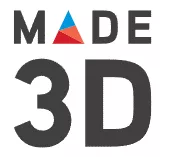
Based on the 3D printing processes PBF-LB and DED, this project aims at the concurrent engineering of designing processable multi-material optimized alloys, development of design concepts for multi-material structures with specific simulations for load cases and topology optimizations, and an extensive process adaption.
SHOW

The EU-funded SHOW project is realized by a consortium of 69 partners and applied in 20 European cities. It aims to estimate and evaluate the role of autonomous vehicles in making urban transport more effective, sustainable and user friendly.
HADRIAN

HADRIAN (Holistic Approach for Driver Role Integration and Automation Allocation for European Mobility Needs) develops a holistic driving system solution, focusing on the utility of dynamically adjusting (fluid) human-machine interfaces that take environmental and driver conditions into account. The project increases the safety of automated driving.
COBRA
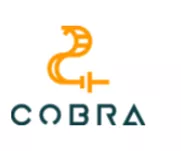
The transition to electric mobility is widening the gap between supply and demand and increasing the price of cobalt. However, substitution of cobalt in Li-ion batteries, although possible, has not taken place. The COBRA (Developing the next generation of Cobalt-free Li-ion batteries for electric vehicles) project aims to reverse this situation.
MARBEL
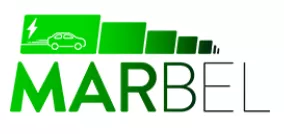
MARBEL focuses on the need for fast charging and long-lasting batteries to boost end-user demands, while applying high modularity and easy assembly and developing novel testing methodologies.
greenSPEED

The greenSPEED project provides solutions for new sustainable electrode and cell manufacturing processes with reduced energy consumption, lower carbon footprint and ZERO emissions of Volatile Organic Compounds (VOCs). greenSPEED aims to secure Europe’s leadership in the production of batteries with a lower carbon footprint by improving production processes and establishing them in Europe.
FREE4LIB

FREE4LIB aims to develop at TRL 5-6 technologies to achieve 6 new sustainable and efficient processes to recycle end-of-life (EOL) LIBs (dismantling, pre-treatment and 4 materials recovery processes) delivering very innovative recycling solutions to reach highly efficient materials recovery (metal oxides, metals and polymers) improving the supply of secondary resources at EU level. FREE4LIB also will deliver technologies to improve 3 processes aiming at metals and polymers re-using and electrode synthesis on the same value chain as secondary raw materials for re-manufacturing greener batteries, and it will study options to harness on-reusable elements in other fields. FREE4LIB will also deliver a methodology based on the Battery Passport principles to improve processes traceability.
ALL-IN Zero
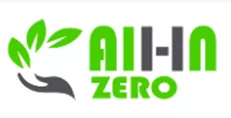
The main objective of ALL-IN Zero is to develop a multi-fuel system to generate electrical and mechanical power with zero emissions. This system will feed low, zero or carbon carbon-negative fuels like ammonia, natural gas, biogas or alcohols, into a Compact Membrane Reactor producing a common intermediate temporary energy vector to be consumed in situ by power generation systems such as internal combustion engines and fuel cells.
OPERA

Green, high-performing and safe batteries based on abundant materials are a key element in the transition to a carbon-neutral future. However, to accelerate their development, a deep understanding of the complex electro-chemo-mechanical processes within the battery is required, which is only accessible through advanced experimental and computational methods. Zero-excess solid-state batteries, where the anode is formed in situ, have emerged as a promising new generation of environmentally friendly batteries with high energy density, improved safety and higher cost-efficiency, but only after solutions for non-uniform anode formation were found. In OPERA, seven leading research institutions, two synchrotron radiation facilities, a small-medium sized enterprise and a large technological company, all from complementary research fields such as batteries, surface and material science, and multiscale modelling, propose a unique strategy to face the current challenges of this technology.
AccCellBaT

Today’s battery development is impeded by a lack of virtualization, resulting in cost-and time-intensive physical verification and validation (V&V) activities. AccCellBaT addresses these shortcomings by substantially advancing virtualization, front-loading, and continuous V&V in future technology battery development to optimize battery design, cost, and time-to-market.
NEXTBMS

The overall NEXTBMS aim is to develop an advanced battery management systems (BMS) built on fundamental knowledge and experience with the physicochemical processes of lithium-ion batteries, which will enable the significant enhance of current modelling approaches, including the readiness for upcoming lithium (Li) battery material developments.
StasHH

StasHH (Standard Sized FC module for Heavy Duty applications) develops an open standard for heavy-duty fuel-cell modules in terms of size, interfaces, control and test protocols, with the objective of kickstarting the use of fuel cells and hydrogen in the heavy-duty mobility sector.
IMMORTAL
IMMORTAL (IMproved lifetiMe stacks fOR heavy duty Trucks through ultrAdurabLe components) develops exceptionally durable and high power density MEAs, well beyond the current state of the art up to TRL4, by building on understanding of fuel cell degradation pathways specific to heavy-duty truck operation and developing lifetime prediction models from extensive real-life stack operation, accelerated stress test and load profile cycles on short stacks.
SO-FREE

The overall objective of SO-FREE (Solid oxide fuel cell combine heat and power: Future-ready Energy) is the development of a fully future-ready solid oxide fuel cell (SOFC)-based system for combined heat and power (CHP) generation. This means a versatile system concept for efficient, near-zero-emission, fuel-flexible and truly modular power and heat supply to end users in the residential, commercial, municipal and agricultural sectors.
REACTT

Solid Oxide Electrolysis (SOE) and its possibility to operate in reversible mode (rSOC) can play a major role in H2 production at low cost and for renewable energies storage. These operating modes with high current and transients can induce degradation that needs to be mitigated for successful system deployment. Federating the cumulated advances built up in preceding collaborative projects, REACTT with an established expert team, realizes a Monitoring, Diagnostic, Prognostic and Control Tool (MDPC) for SOE and rSOC stacks and systems.
MORELife

The MORELife project aims at the improvement of materials and operating strategies in order to enhance the durability and reliability for the specific needs of fuel cells in heavy duty truck application.
FuelSOME

FuelSOME’s vision is to make a substantial contribution to the required drastic reduction of Greenhouse gases (GHG) emissions from global shipping (climate change mitigation) with a reduction of air pollutants, such as NOx, SOX, and pollution prevention and control, at the same time.
E-TANDEM

Carbon neutral, high-energy density e-fuels are crucial to de-fossilize long-haul transport. Mildly oxygenated compounds such as C5+ (higher)
alcohols and their ether derivatives hold the promise to overcome limitations of known e-fuels, such as non-oxygenated Fischer-Tropsch
hydrocarbons or heavily oxygenated methanol and DME, but no process exists for their effective production. The project aims to develop a disruptive route wherein CO2, water and renewable power are converted to higher oxygenate e-fuels.
RealHyFC

RealHyFC gathers key actors of the whole PEMFC value chain to overcome crucial hurdles towards industrial empowerment on heavy-duty (HD) applications, mainly for land transport while expecting benefits for ships, trains or aircrafts.
MEAsureD
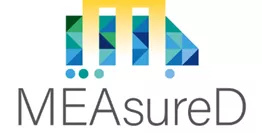
The goal of MEAsureD is to enhance the performance and lifespan of HT-MEAs for heavy-duty vehicles (HDV) by combining experimental approaches and simulations/modelling. This involves developing and optimizing MEA components to improve the overall system performance of fuel cells.
ArchitectECA2030
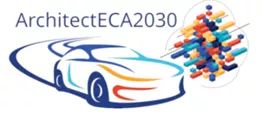
The ArchitectECA2030 (Trustable architectures with acceptable residual risk for the electric, connected and automated cars) project designs a validation framework that includes harmonized methods and tools for the quantification of residual risks. The goal of the project is to establish robust mission-validated traceable design of ECS, the quantification of an accepted residual risk of ECS for electric vehicles and increased end-user acceptance.
HiEFFICIENT

Within HiEFFICIENT (Highly EFFICIENT and reliable electric drivetrains based on modular, intelligent and highly integrated wide band gap power electronics modules) the project partners work towards the sustainable mobility and efficient use of resources goals of the European Green Deal and develop the next generation of wide band-gap semiconductors (WBG) in the area of smart mobility.
AI4CSM

The AI4CSM (Automotive Intelligence for/at Connected Shared Mobility) project develops advanced electronic components and systems (ECS) and architectures for future mass-market ECAS vehicles. This fuels the digital transformation in the automotive sector to support the mobility trends and accelerate the transition to-wards a sustainable green and digital economy.
AIDOaRt

AIDOaRt (AI-augmented automation supporting modelling, coding, testing, monitoring and continuous development in Cyber-Physical Systems) is a 3 years long H2020-ECSEL European project involving 32 organizations, grouped in clusters from 7 different countries, focusing on AI-augmented automation supporting modelling, coding, testing, monitoring and continuous development in Cyber-Physical Systems (CPS).
A-IQ Ready
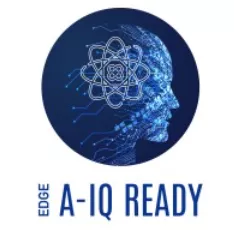
Global environmental issues, social inequality and geopolitical changes will pose numerous problems for our society in the future. To face these new challenges and deal with them, there is a need to understand and appropriately utilize new digital technologies such as artificial intelligence (AI), the Internet of Things (IoT), robotics and biotechnologies. A-IQ Ready proposes cutting-edge quantum sensing, edge continuum orchestration of AI and distributed collaborative intelligence technologies to implement the vision of intelligent and autonomous ECS for the digital age.
ARCHIMEDES
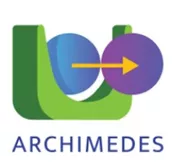
In ARCHIMEDES, components, models and methodologies to increase the efficiency and lifetime of the propulsion components, power components and energy storage devices in automotive, aviation and industry will be developed. This will support the energy transition on the consumer’s side. ARCHIMEDES aims to change technologies and products in the automotive, aviation, infrastructure domains and the related ecosystem towards a resilient, de-carbonized, digitalized, and green EU: It will help building trust in the new technologies and thus contribute to accelerating the energy transition, safety and security.
R-PODID

R-PODID (Reliable Powerdown for Industrial Drives) aims to develop an automated, cloudless, short-term fault-prediction for electric drives, power modules, and power devices, that can be integrated into power converters. Thereby, electrical and mechanical faults of machines and of the power converters driving them will become predictable within a limited prediction horizon of 12-24h. This will enable a power-saving shutdown of a larger number of production machines during idle times, because a looming failure during the next power-on cycle can be reliably foreseen. It will also enable reliable mitigation of dangerous faults in applications using modern power-devices like silicon-carbide (SiC) and III/V-semiconductor devices like gallium-nitride (GaN).
EcoMobility
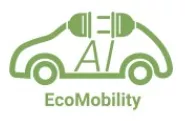
EcoMobility will create and demonstrate an adaptive data-driven development, deployment and operation framework for connected / electric vehicles to enable a digital mobility ecosystem. It aims at exploiting new ways to address challenges related to the digital mobility at the business models & mobility level, and to validate the technologies developed through real-world use cases.
Arrowhead fPVN

The Arrowhead flexible Production Value Network (fPVN) project will provide autonomous and evolvable interoperability of information through machine-interpretable content for fPVN stakeholders. The resulting technology is projected to substantially impact manufacturing productivity and flexibility.
FR8RAIL IV
The FR8RAIL IV project (Use-centric rail freight innovation for Single European Railway Area) further develops technologies relevant for the rail freight sector to reach the goal highlighted in the Shift2Rrail Master Plan. The work is partly based on results achieved in the previous projects FFL4E, ARCC, FR8RAIL I-III, and FR8HUB.
MULTI-FUN
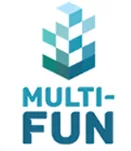
The MULTI-FUN (Provide a significant performance & efficiency gain in MAM products by fully INTEGRATED MULTI-FUNCTIONALITIES based on NOVEL ACTIVE MATERIALS) project focuses on market-creating innovation, developing advanced materials and equipment for the additive manufacturing of multi-material parts.
EnerMan

The EnerMan (Energy Efficient Manufacturing) project reduces the energy consumption of the various components of manufacturing systems, such as machine tools. Specifically, it creates an energy sustainability management framework to collect data from the factory to predict energy trends using industrial processes, equipment and energy cost models
EDEM

Funded under the Marie Skłodowska-Curie program, EDEM (Experimentally validated DNS and LES approaches for fuel injection, mixing and combustion of dual-fuel engines) develops direct numerical simulation and large-eddy simulation techniques for fuel injection, mixing and combustion processes relevant to dual-fuel engines.
BLESSED

To achieve the goals of the European Green Deal on climate neutrality, a 90% reduction in transport emissions is needed by 2050. The automotive industry urgently needs to accelerate the introduction of alternative powertrains for electrified vehicles. Hydrogen-powered Proton Exchange Membrane Fuel Cells (PEMFCs) are carbon-free power devices that meet these goals in both mobile and stationary applications. BLESSED aims
at revolutionising the design process of next generation PEMFCs, to improve efficiency, durability and affordability for widespread use, with direct implications in clean energy and sustainable industry/mobility.
MFLOPS

Efforts to reduce CO2 emissions require innovative and technologically viable solutions to be developed. Technology holds the greatest potential to help society address the challenges of designing energy efficient concepts at affordable prices. Among the wide envelope of factors, one core characteristic relevant to this proposal is the occurrence of multiphase flows, which are ubiquitous in nature and industry. For example, hydraulic
turbomachines, ship propeller systems, and e-fuel injectors are compromised by the occurrence of catastrophic cavitation. In the field of power generation, boiling heat transfer is the predominant energy conversion method. Multiphase flows for immiscible fluids seem to hold the key to the efficient design of emerging electrification technologies of the transport sector, such as battery thermal management systems and Proton Exchange Membrane fuel cells for innovative aviation propulsion systems, as well as in the design of energy efficient marine vessels. Optimisation methods for designing efficient systems are largely missing from the relevant technological sectors. MFLOPS aspires to develop coupled multiphase flow and optimisation methods, including adjoint methods, and apply them to cases specified by MFLOPS’s non-academic beneficiaries and partners.
SCALE

Multi-phase, trans/supercritical and non-Newtonian fluid flows with heat and mass transfer are critical in enhancing the performance of energy production, propulsion and biomedical systems. Examples include: hydraulic turbomachines, ship propellers, CO2-neutral e-fuels and e-motor cooling systems, particleladen flows in inhalers and focused ultrasounds for drug delivery. What all these cases have in common is the high level of complexity which makes Direct Numerical Simulations impossible. State-of-the-art LES simulations rely on simplified assumptions but do not have yet the desired accuracy, while often require enormously expensive CPU resources. The aim of SCALE is to develop simulation methods and reduced-order models using physics-informed and data-driven Machine Learning and optimisation methods for such flow processes.
EcoFuel
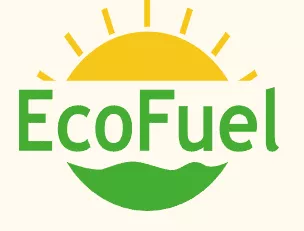
The objective of the EcoFuel project is to develop, demonstrate and, in the long run, bring into production a new process for the generation of drop-in fuel, which will achieve a higher efficiency along the process chain compared to the classical process route via H2, thus saving primary energy, resources and cost.
Smart-RCS
The smart restraint control system – Smart-RCS – adapts airbag deployment depending on each occupant’s individual body metrics and body pos-ture. Smart-RCS will provide optimized protection to every vehicle occupant.

